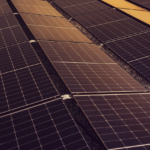A Fly Fishing Rod is designed for casting the fly line, controlling the direction and distance, striking, and landing fish. Shopping for it can be confusing, especially for beginner anglers. Also, the preferences for using the fly fishing rod will only grow and change over the years, and you need to make adjustments gradually. This will also help you build your collection of the best fly fishing rods.
 When buying a new fly fishing rod, one of the crucial things to keep in mind is what type of fishing you love to do. No single fly rod is suitable for all purposes. A rod for freshwater will be different from the one used for saltwater fishing.
When buying a new fly fishing rod, one of the crucial things to keep in mind is what type of fishing you love to do. No single fly rod is suitable for all purposes. A rod for freshwater will be different from the one used for saltwater fishing.
Choosing the best fly fishing rod will largely depend on the type of features you want. Some of the qualities to look for when buying the best fly fishing rods are:
Fly Rod Line Weight
The fly rod line weight is a vital feature to consider as the wrong weight can cause problems in casting precision and control. Fly rod line weights are numbered from 1 to 15. The higher the number, the higher is the line weight. Fly line weight of 8 and above are typically used for large and robust fishes such as bass and salmon. Lighter fly lines are ideal for tiny fishes such as small trout or panfish.
- Fly Rod Length
Next, you need to determine the fly rod length according to your fishing needs. Fly rods are available in different lengths. For fishing in a variety of conditions, 8.5 feet fly rod length will work great. If you need to make long casts or fish in the wind or large rivers, opt for a 9 feet rod length.
For fishing smaller fish or in small streams and brooks, you can go short on length 8 feet or less. The right length to choose will also depend on how comfortable you are with different lengths.
- Fly Rod Action
Fly rod action can be described as the flexibility of the rod. There are fly rods that bend mostly at the top end, while some bend throughout their whole length. The three different fly rod actions you need to choose from are fast action, medium action, and slow action.
Fast action is the least flexible and is ideal for casting on windy days. Those who want distance and accuracy while fishing in large rivers will usually choose a fast action rod. Medium action fly rods are considered the most versatile of all the rods available and work well in various conditions. Slow action rods are very flexible and ideal for smaller streams and lakes. Slow action rods make it easier to cast and easy to learn the skill.
- Rod Material
The type of material used in the fly fishing rod is also to be considered. Fly rods are usually made from graphite, fiberglass, or bamboo rods. Graphite rods are lightweight, strong, and all-purpose rods; especially a good choice for making longer casts. Fiberglass rods offer more flexibility than graphite rods, but they are soft and ideal for small streams and smaller fishes. Bamboo or cane rods, though expensive, are the original fly rod material.
- Rod Pieces
Multi-piece rods are quite convenient to carry and store in your car. If you frequently travel by plane, get a fly rod that breaks down into four or more pieces for easy carrying in a suitcase or backpack. 4-piece rods are usually the most preferred among travelers.
Buy a rod that you can afford and will last a lifetime. Most of the time, the amount you pay is the quality you get. However, the best fly fishing rods will be the ones you are comfortable using.



